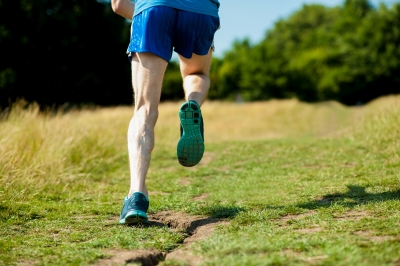Running with Music
The other day I came across an article about the psychological effect of working out with music, and it reminded me of another timely topic: the ideal cadence for runners. I think it can be especially important now that the weather may be getting warmer and new and experienced runners are taking to the streets or treadmills.
Running is a type of exercise that’s easy and cheap to do. However, it’s also easy to get injured, especially if you’re a new runner or training for a marathon. Without going into too much detail regarding running theories and mechanics, research has shown there is one simple way to improve your running mechanics and decrease your risk of injury: increase your cadence.
Cadence is the number of steps you take in one minute. You can count how many times one leg hits the ground for one minute, and that will give you your steps per minute cadence. A study done in 2011, published in the journal of Medicine and Science in Sports and Exercise investigated how cadence can reduce the loading forces on the legs and decrease the risk of injury or pain in runners. They concluded that increasing running cadence as little as 10% can greatly reduce the impact and loading force on the hip, knee, and ankle; and further improved running mechanics.
This meant that runners who took shorter and quicker steps or strides were running better, more efficiently, and with less pain. So the next question is, “What’s the ideal cadence?”
 Which brings us to the title of this post, running with music. According to several sources, 90 steps per minute is the ideal cadence for good running form. This means that one foot hits the ground 90 times per minute, or you can look at it another way, it’s 180 steps per minute. Extrapolating further, that’s 180 beats per minute or 180 BPM. If you searched around, there are several websites that offer music at that speed, and a podcast that I use myself for varied BPM music. With music that’s set at 180 BPM, you can just run along with the music. Sure, it’ll seem quite fast if you’re not used to running at that cadence and it will take some time to get used to. However, in the long run it’s better for you. Shorter and lighter strides will decrease the loading force and cut down on your pain and injury with running.
Which brings us to the title of this post, running with music. According to several sources, 90 steps per minute is the ideal cadence for good running form. This means that one foot hits the ground 90 times per minute, or you can look at it another way, it’s 180 steps per minute. Extrapolating further, that’s 180 beats per minute or 180 BPM. If you searched around, there are several websites that offer music at that speed, and a podcast that I use myself for varied BPM music. With music that’s set at 180 BPM, you can just run along with the music. Sure, it’ll seem quite fast if you’re not used to running at that cadence and it will take some time to get used to. However, in the long run it’s better for you. Shorter and lighter strides will decrease the loading force and cut down on your pain and injury with running.
If you have any questions or want a running analysis, come talk to the physiotherapists at Professional Physical Therapy and Training located in Summit and Madison, NJ. We can video your running and answer any questions about running technique or form.
Image courtesy of stockimages / FreeDigitalPhotos.net